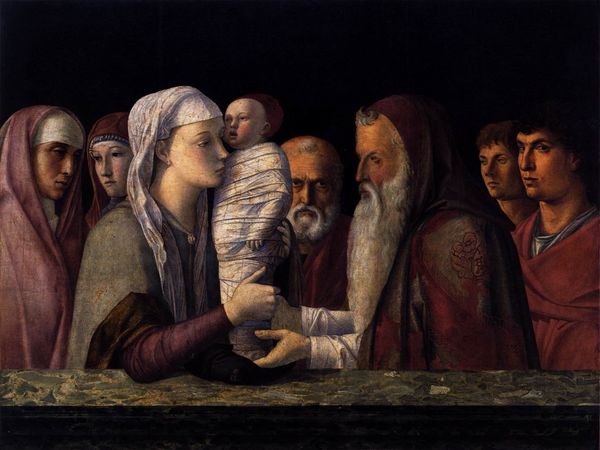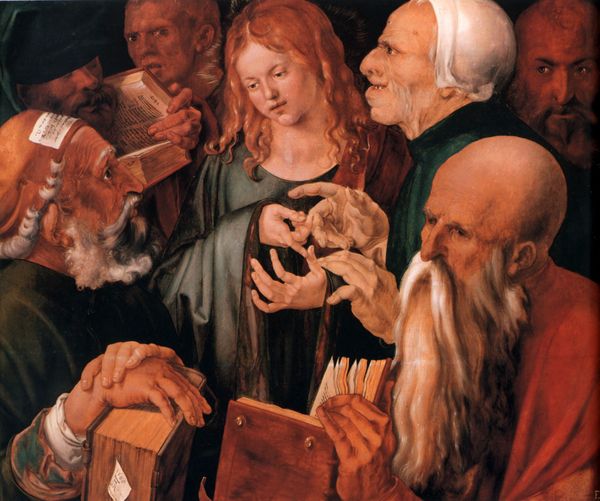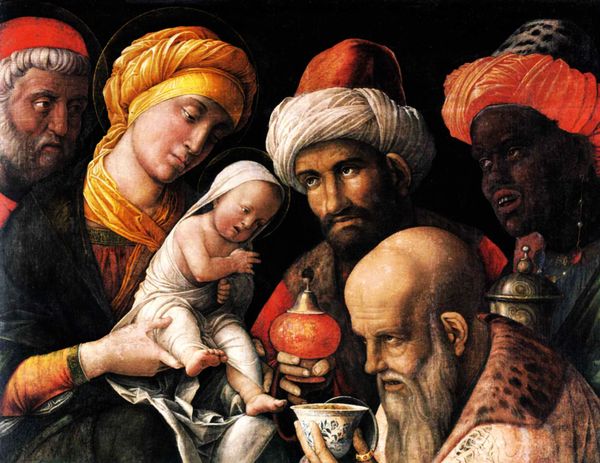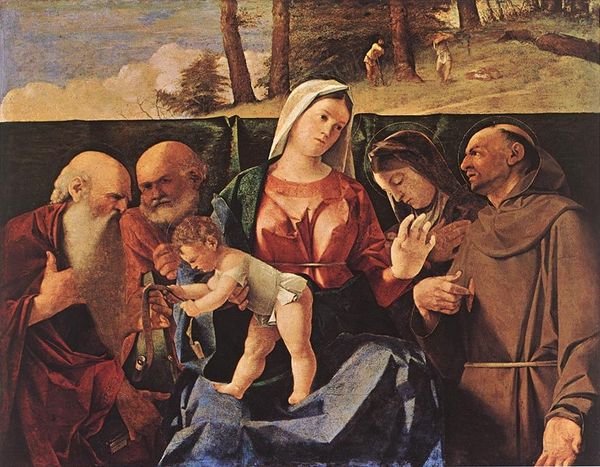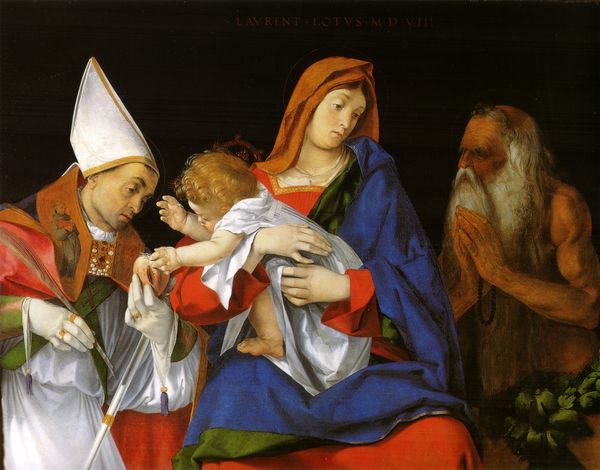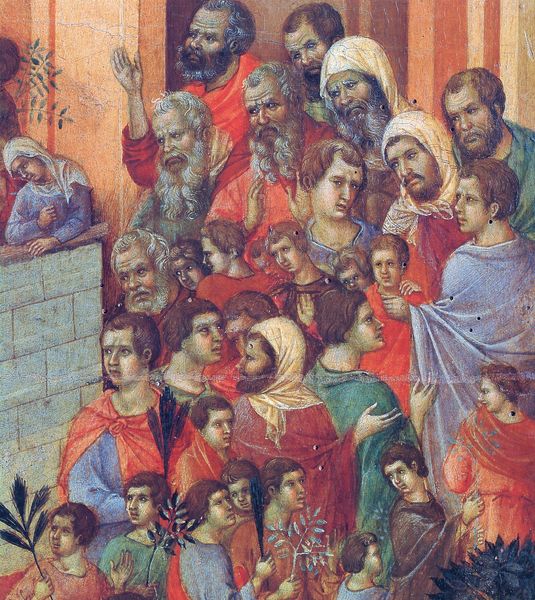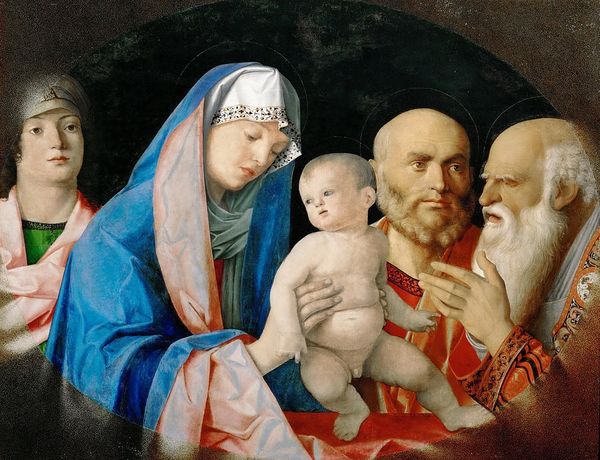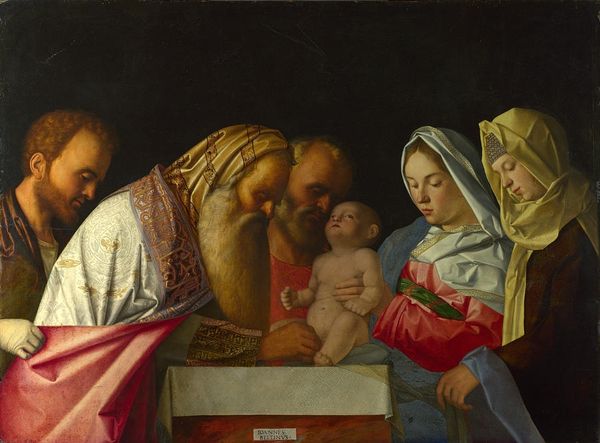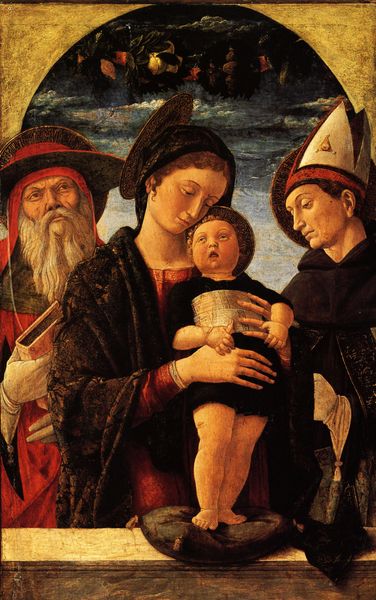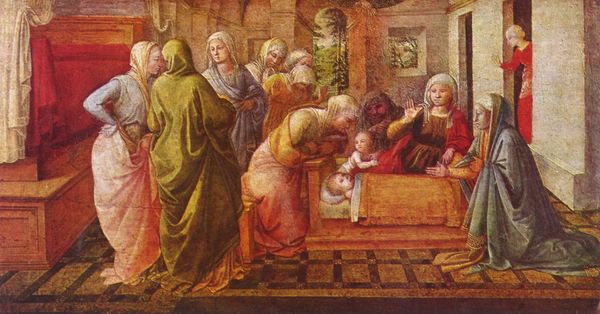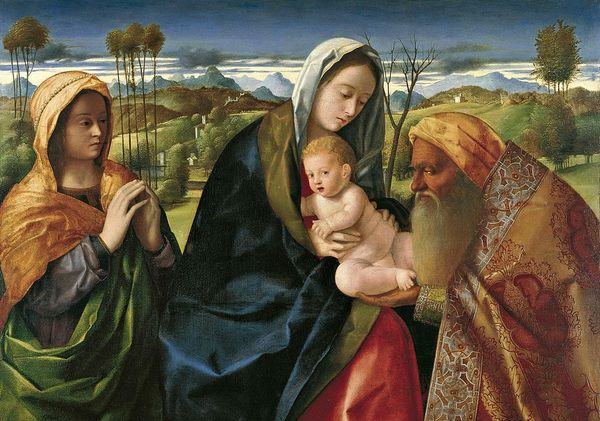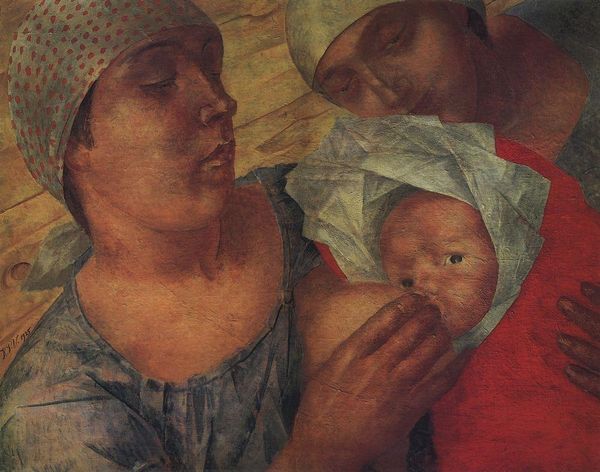
tempera, painting, oil-paint
#
narrative-art
#
tempera
#
painting
#
oil-paint
#
figuration
#
oil painting
#
genre-painting
#
history-painting
#
italian-renaissance
#
early-renaissance
#
christ
Dimensions: 86.3 x 68.9 cm
Copyright: Public domain
Curator: Stepping up to the painting, one is struck by the sheer, well, almost sculptural stillness of this assembly of figures. It is as though it’s a Roman relief, but then with that rather somber, even gloomy, backdrop, it’s both compelling and unnerving at once. Editor: Yes, unsettling. This is Andrea Mantegna's "Presentation at the Temple," an oil on wood panel created around 1453. The somber backdrop immediately puts the focus on the characters, drawing me in so I can look deeper. As we analyze the role of the figures portrayed here, we realize there is much to be unsettled about regarding motherhood, religion and sacrifice. Curator: Mantegna situates this religious scene with an incredibly shallow foreground, that allows him to present these monumental, individualized figures to a viewer. Think about how groundbreaking that perspective would have been during this Early Renaissance period. Notice how he renders Mary’s downturned eyes and solemn visage in a scene where sacrifice is made – for both mother and child. It creates tension by using the figures, and through subtle expressionistic detail. Editor: Precisely, these details invite us to examine how Mary and other female figures like the one in the pale-pink head covering were subject to specific demands regarding how women were portrayed or participated in Italian Renaissance culture. This can apply to artistic and sociopolitical movements, where we see a pattern of women placed into very prescriptive roles. Also note that although the work seems traditional in terms of theme, his rendering, in many ways, offers more ambiguity. The muted colors and almost severe compositions remove all sweetness, forcing the audience to reflect in other ways. Curator: It is a sophisticated approach to religious painting that certainly invites introspection on socio-cultural issues surrounding Renaissance Europe. And, of course, you can examine the role of men and religion itself! His genius was portraying such complex narratives within simple, well almost brutally rendered, formats. Editor: Absolutely. Mantegna prompts us to consider these tensions in art history – where religion, politics, and daily life often intersect. Curator: Agreed; “Presentation at the Temple” functions on so many levels: an artwork for quiet contemplation on larger forces and one that reflects an era caught between tradition and progress.
Comments
No comments
Be the first to comment and join the conversation on the ultimate creative platform.
